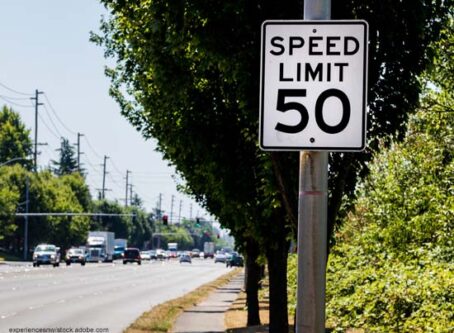Kansas Supreme Court rules officers cannot use owner-is-driver presumption
A recent ruling by the Kansas Supreme Court could cause problems with how law enforcement chooses to pull motorists over. The court unanimously decided that a police officer automatically presuming that the owner is the driver behind the wheel goes against Fourth Amendment protections, the same presumption that red light and speed cameras rely on.
On July 27, the Kansas Supreme Court reversed a Kansas Court of Appeals decision in favor of the state. The appellate court ruled that an officer had reasonable suspicion to pull over a vehicle that, after running the plates, revealed the owner had a revoked license despite no traffic violations committed at the time.
The Supreme Court disagreed. In its published opinion, the court noted that a routine traffic stop is a warrantless seizure under the Fourth Amendment and is therefore unreasonable unless the officer who initiates the stop has a reasonable and articulable suspicion, based on facts, that the person stopped has committed, is committing or is about to commit a crime.
The state carries the burden to justify a warrantless seizure, the court points out. However, the state cannot draw inferences in favor of the state from a lack of evidence when doing so. That would effectively relieve the state of the burden.
“An officer cannot begin a traffic stop to investigate whether the driver of a vehicle has a valid license based solely on the fact the vehicle’s registered owner has a suspended or revoked driver’s license,” the court opined. “The officer must be able to point to specific and articulable facts from which the officer can rationally infer that the driver of the vehicle – not just the registered owner – has a suspended driver’s license.”
In April 2016, Douglas County Sheriff’s Deputy Mark Mehrer pulled over a 1995 Chevrolet 1500 pickup truck after the Department of Revenue’s database revealed that Charles Glover Jr., the registered car owner, had a revoked license. With no traffic violations occurring and without confirming the identity of the driver, Deputy Mehrer initiated the traffic stop anyway.
Glover was charged with driving as a habitual violator. Subsequently, he filed a motion to suppress evidence since the officer lacked reasonable suspicion to initiate the traffic stop.
A district court ruled in Glover’s favor, stating it was not “reasonable for an officer to infer that the registered owner of a vehicle is also the driver of the vehicle absent any information to the contrary.” The district court judge pointed out she has three cars registered in her name, two of which are driven by her husband and daughter.
An appellate court rejected the district court’s finding, stating the following:
“A law enforcement officer has reasonable suspicion to initiate a stop of a vehicle to investigate whether the driver has a valid driver’s license if, when viewed in conjunction with all of the other information available to the officer at the time of the stop, the officer knows the registered owner of the vehicle has a suspended license and the officer is unaware of any other evidence or circumstances from which an inference could be drawn that the registered owner is not the driver of the vehicle.”
In her Supreme Court opinion, Justice Maria Luckert pointed out the difference between “reasonable suspicion” and “some suspicion.”
“Deputy Mehrer had some suspicion of a specific crime – driving while revoked,” Luckert wrote. “But Deputy Mehrer, who had not observed a traffic violation, needed reasonable suspicion Glover was driving, not just some suspicion.”
Justice Luckert found two issues with the owner-is-the-driver presumption.
First, it “implicitly requires applying and stacking unstated assumptions that are unreasonable without further factual basis,” according to the opinion.
Second, the presumption is based on what the officer does not know, thus, shifting the burden to the defendant.
“Many of the decisions rest on the conclusion that common sense tells us that a registered owner is the primary driver of all vehicles registered in his or her name,” Luckert wrote. “But as the district court indicated, common experience suggests otherwise. And, as we have discussed, even if we accept that assumption, common sense does not say that someone who cannot legally drive will continue to do so. We cannot assume someone is breaking the law.”









